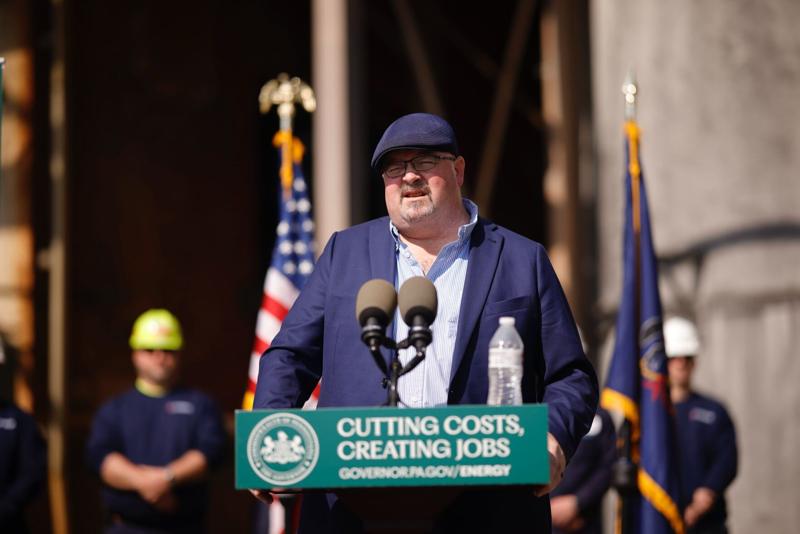(The Center Square) – Gov. Josh Shapiro’s new carbon tax plan won over some unlikely allies – Pennsylvania’s building and construction trades.
And they say they want lawmakers to get on the same page, too.
“The governor acknowledged that we need the Legislature to act,” said Robert Bair, president of the Pennsylvania State Building and Construction Trades. “And as I told a couple of them yesterday: Equate this to the governor has set the Thanksgiving table, now it’s time to sit down and eat.”
Bair’s support comes after a years-long alignment with Republican and Democratic lawmakers opposed to joining a regional pact that places the onus on energy plants to lower air pollution. Critics say Pennsylvania’s role as one of the nation’s largest power suppliers makes its participation economically untenable.
Active in 11 states, the pact – called the Regional Greenhouse Gas Initiative, or RGGI – tightens the cap on allowable emissions every year until reaching zero in 2040. The money made from selling and trading of these caps supports green energy programs across the member states.
In 2019, former Gov. Tom Wolf signed Pennsylvania up to become the pact’s 12th member without permission from lawmakers. In November, the Commonwealth Court ruled that doing so was unconstitutional because RGGI would impose a tax on energy plants that were not legislatively approved.
Shapiro appealed that decision, though he promised to drop the issue if his Pennsylvania-specific carbon tax plan becomes law instead.
That plan, announced Wednesday, comes in two parts: the Pennsylvania Climate Emissions Reduction Act and the Pennsylvania Reliable Energy Sustainability Standard. The administration calls them PACER and PRESS, for short.
The former would cap carbon emissions from power plants and require companies to buy carbon offsets, much like RGGI does but in Pennsylvania alone. The latter would require 35% of the state’s electricity to come from clean sources.
Together, Shapiro said his proposal would save residents $252 million over five years and create 14,500 jobs.
“I want to maintain Pennsylvania’s status as the No. 1 energy exporter in the country,” Bair said. “Pennsylvania is built on natural gas. The governor, to his credit, acknowledged that – and we’re not going to let that go. But doing nothing is not an option.”
Laborers, lawmakers and residents alike have long feared the spike in utility rates that could come from the uniform emissions cap set in RGGI.
For building trade workers, in particular, the unintended consequences of a regional carbon tax could mean unemployment.
“Energy is something that’s so important to the building trades because not only do we build and maintain our plants – such as the Susquehanna generating plant – but we do upgrades in these places to keep peak efficiency,” said Pat Dolan, business manager for the United Association Local Union 524. “Another thing that we do is energy upgrades throughout our buildings, our schools in the area. That’s job creation that is so key to everything that we do.”
Leaders from the Laborers District Councils of Western Pennsylvania and Philadelphia, as well as the Steamfitters Local 420, also threw support behind Shapiro’s plan.
“Everybody that’s been involved in this is committed to making this work – and we may not all agree right now on how to get there, but we all agree we have to get there,” Bair said. “It’s really easy to be part of a problem. It’s really hard to be part of the solution.”







